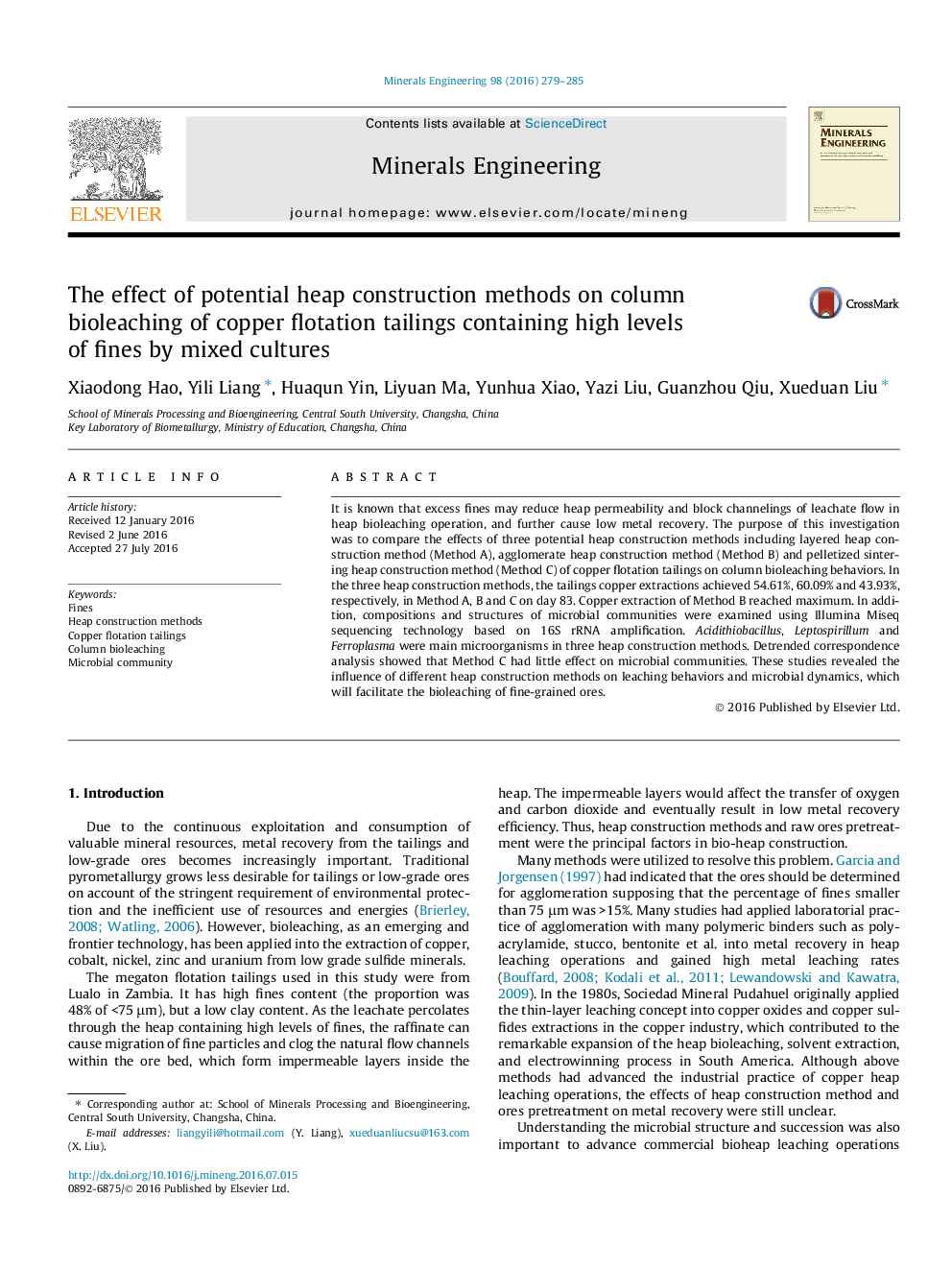| Article ID | Journal | Published Year | Pages | File Type |
|---|---|---|---|---|
| 6672765 | Minerals Engineering | 2016 | 7 Pages |
Abstract
It is known that excess fines may reduce heap permeability and block channelings of leachate flow in heap bioleaching operation, and further cause low metal recovery. The purpose of this investigation was to compare the effects of three potential heap construction methods including layered heap construction method (Method A), agglomerate heap construction method (Method B) and pelletized sintering heap construction method (Method C) of copper flotation tailings on column bioleaching behaviors. In the three heap construction methods, the tailings copper extractions achieved 54.61%, 60.09% and 43.93%, respectively, in Method A, B and C on day 83. Copper extraction of Method B reached maximum. In addition, compositions and structures of microbial communities were examined using Illumina Miseq sequencing technology based on 16S rRNA amplification. Acidithiobacillus, Leptospirillum and Ferroplasma were main microorganisms in three heap construction methods. Detrended correspondence analysis showed that Method C had little effect on microbial communities. These studies revealed the influence of different heap construction methods on leaching behaviors and microbial dynamics, which will facilitate the bioleaching of fine-grained ores.
Related Topics
Physical Sciences and Engineering
Chemical Engineering
Chemical Engineering (General)
Authors
Xiaodong Hao, Yili Liang, Huaqun Yin, Liyuan Ma, Yunhua Xiao, Yazi Liu, Guanzhou Qiu, Xueduan Liu,
